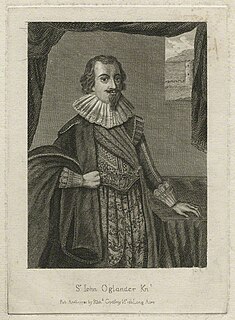
The Great Budbridge Manor is a manor house just south of Merstone, near Arreton, Isle of Wight, England. Fish ponds on the grounds appear medieval.

Morton Manor is a manor house originating in the 13th century, in Brading, Isle of Wight, England. It is located 1 mile (1.6 km) southwest of Sandown Road. The 14th century fairly small house was modified in the 19th century. Constructed of varied materials, it was refurbished and extended in the early 20th century in an Arts and Crafts style. A Tudor fireplace is in the dining room, with William De Morgan green glazed tiles. The manor includes a small museum of rural life.

Nunwell House, also Nunwell Manor, is a historic English country house in Brading, Isle of Wight. Located 3 miles (4.8 km) south of Ryde, the Tudor and Jacobean style house also has later additions. The house contains family militaria. It was occupied by the Oglander family from Norman times until 1980. Nunwell House is a Grade II* listed building.
Winston Manor is a manor house on the Isle of Wight, situated in the Newchurch parish. Judging from the Domesday Book entries, it was an important manor held in part by the king and in part by William and Gozelin,sons of Azor. The king's portion formed two manors with a virgate of land in Soflet and was valued at £3, while the Azor land was held by six tenants and was worth 70s., which makes up a considerable holding if the entries refer to the same place. It seems to have early been among the endowments of Christchurch Twyneham, being confirmed to the convent by William de Redvers, Earl of Devon. In 1241 Richard Quor gave up to the prior all his right in the manor, and the priory still held it at the end of the century as a thirteenth part of a fee. Its further history is not known, but it came in the 19th century into the hands of Mr. Alfred Smith, and as of 1912 it was owned by his daughter's trustees.
Merston Manor is a manor house in Merstone on the Isle of Wight, England. The manor was first mentioned in the Domesday Book. Prior to the Norman Conquest, Merston Manor was owned by the Brictuin family. The present home, built in 1605 in the Jacobean style by Edward Cheeke, was rebuilt in the Victorian era. This structure may be the oldest brick house on the Island. The manor now belongs to the Crofts family.

Wolverton Manor is a manor house in Shorwell, on the Isle of Wight, England. The original house was started by John Dingley, Deputy Governor of the Isle of Wight. The Jacobean style home, built by Sir John Hammond after the death of Sir John Dingley, is the second house built on the site. There is a two-storey porch which features a flat roof and hollow angle columns.
Briddlesford Manor, is a manor house on the Isle of Wight, situated in the parish of Arreton.
Hale Manor is a manor house on the Isle of Wight, situated in the parish of Arreton. It forms the south-eastern portion of the parish adjoining Newchurch, and comprises the high ground to the south of the River Yar above Horringford.
Horringford Manor is a manor house on the Isle of Wight, situated in the parish of Arreton.
Adgestone Manor is a manor house in Brading on the Isle of Wight.
Alverstone Manor is a manor house in Alverstone in the parish of Brading on the Isle of Wight.
Milton Manor is a manor house in the parish of Brading on the Isle of Wight, in England.
Blackpan Manor is a manor house in the parish of Brading on the Isle of Wight.
Borthwood Manor is a manor house in the parish of Brading on the Isle of Wight.
Grove Manor is a manor house in the parish of Brading on the Isle of Wight. Also a stately home in Ashgrove, Brisbane, Australia.
Hardingshute Manor is a manor house in the parish of Brading on the Isle of Wight.
Rowborough Manor is a manor house in the parish of Brading on the Isle of Wight.
Sandown Manor is a manor house in the parish of Brading on the Isle of Wight.
Scotlesford Manor was a manor house in the parish of Brading on the Isle of Wight.
Bonchurch Manor is a manor house on the Isle of Wight, situated in the parish of Bonchurch.






